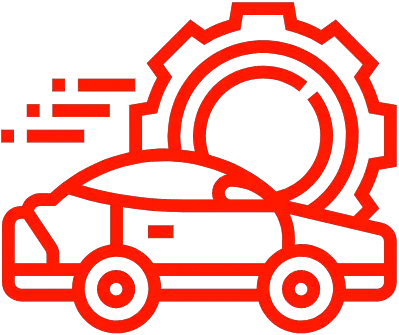Troubleshooting Your Car’s No Power from Distributor to Spark Plugs
If a vehicle is having difficulty starting or running, it could be caused by an issue with the power from the distributor to the spark plugs. This means that there is no electrical current flowing from the distributor to the spark plugs in order for them to fire and ignite the fuel-air mixture in order for the engine to run. This issue could be caused by a number of issues such as faulty wiring, bad connections, a faulty distributor cap or rotor, or a worn out ignition coil. It is important to diagnose and identify the cause of this issue before attempting any repairs as it could lead to further damage if not properly addressed.
Faulty Ignition Coil
If the ignition coil in an automobile isn’t working properly, it can prevent the spark from getting to the spark plugs, resulting in no power from the distributor. To identify this, you should check for any visible signs of damage or wear on the ignition coil. If it appears to be okay, you should use a multimeter to test for continuity and resistance. If there is no continuity or resistance present, then the coil needs to be replaced.
Damaged Distributor Cap
The distributor cap is responsible for directing high voltage from the ignition coil to each spark plug. If this cap is damaged or worn out, it can prevent the spark from reaching its destination and cause no power from distributor to spark plugs. To diagnose this issue, visually inspect the distributor cap for any signs of damage or wear. Additionally, you can use a multimeter to test for continuity and resistance between each terminal and its corresponding wire. If there is no continuity or resistance present, then it needs to be replaced.
Loose Connections
If any of the connections on the distributor cap are loose or disconnected, then this could also cause no power from distributor to spark plugs. You should carefully check all connections between wires and terminals on both ends of the distributor cap for any loose connections that could be causing an issue with power delivery. Additionally, you should check all other connections throughout the engine bay such as those connecting to sensors and fuel injectors as these may also be causing an issue with power delivery.
Bad Distributor Rotor
The rotor inside of a distributor is responsible for providing a path of electricity from one part of an engine bay directly into another area such as a spark plug or fuel injector. If this rotor becomes worn out or damaged, then it can prevent electricity from reaching its destination and therefore lead to no power from distributor to spark plugs. You should visually inspect the rotor for any signs of wear or damage such as cracks or corrosion before replacing it if needed.
Worn Out Relays
Finally, if any relays in an engine bay become worn out they can prevent electricity from reaching its destination which will result in no power from distributor to spark plugs. You should use a multimeter to test each relay for continuity and resistance before replacing them if needed. Additionally, you should inspect all other components in an engine bay that rely on electricity such as sensors and fuel injectors as these may also be causing an issue with power delivery.
Checking the Ignition Coil
The ignition coil is an integral part of an automobile’s ignition system, and is responsible for providing a high voltage spark to ignite the fuel in the combustion chamber. Checking the ignition coil for any signs of wear and tear or damage is essential for ensuring that no power from distributor to spark plugs is lost. The first step in checking the ignition coil is to inspect its wires and connectors, making sure they are all tightly connected and free from corrosion or damage.
Next, using a multimeter, measure the resistance on the primary side of the coil. This will provide you with an indication of whether there is anything wrong with the electrical circuit that could be causing a lack of power from distributor to spark plugs. If there is a significant drop in resistance, then it may be time to replace your ignition coil.
Inspecting the Distributor Cap
The distributor cap plays an important role in ensuring that power from distributor to spark plugs is relayed correctly within an automobile’s ignition system. To check for any issues with this component, carefully inspect it for any cracks or damaged parts. In addition, if you notice any worn out parts within it then these should be cleaned and replaced as soon as possible.
It is also important to check all of the terminals on the distributor cap for corrosion or damage which could be causing a lack of power from distributor to spark plugs. If this does appear to be an issue then these terminals should be tightened securely before being tested with a multimeter for accurate voltage readings.
Examining the Distributor Rotor
The rotor armature inside a car’s distributor cap can play an important role in ensuring that there is enough power from distributor to spark plugs in order for your engine to start properly. To check this component, examine it carefully for any signs of broken or bent contacts which may be blocking off electricity flow between components within your vehicle’s ignition system.
If you have access to a digital multimeter then use this tool to test all relays and other electrical components in your car’s engine bay as well as checking them visually for any open circuits or short circuits which may also be preventing your engine from starting up properly.
Replacing Faulty Ignition Coils
If after carrying out all these checks you still find that there is no power from distributor to spark plugs then it may be time to replace your faulty ignition coils entirely. Before buying new coils ensure that they are compatible with your vehicle’s make and model by consulting either your owner’s manual or seeking advice from an automotive professional who can advise you on what components work best together within your car’s particular engine system configuration.
Once you have purchased new coils, replacing them should involve simply unscrewing them from their mounting points using either a socket wrench or spanner depending on their particular design, before reattaching them securely into their mounting points using either bolts or screws depending on their design once again. Finally connect up all wiring correctly and test out whether they are functioning correctly by starting up your vehicle – if not consult either online resources or seek help from an automotive expert who can help diagnose any further issues which may still remain unsolved after replacing your faulty coils!
FAQ & Answers
Q: How to diagnose no power from distributor to spark plugs in an automobile?
A: In order to diagnose no power from distributor to spark plugs in an automobile, one should first check the ignition coil by examining the wires and connectors, and testing the coil resistance. The distributor cap should then be inspected for cracks or damaged parts, followed by tightening connections and inspecting terminal ends for corrosion or damage. Additionally, examining the distributor rotor and verifying contact points on the rotor armature is important, as well as testing relays and other electrical components for open circuits or short circuits using a digital multimeter.
Q: What are some common causes of no power from distributor to spark plugs in an automobile?
A: Common causes of no power from distributor to spark plugs in an automobile include a faulty ignition coil, damaged distributor cap, loose connections, bad distributor rotor and worn out relays. It is important to properly diagnose the issue before attempting any repairs.
Q: What steps must be taken when replacing a faulty ignition coil in an automobile?
A: When replacing a faulty ignition coil in an automobile it is important to first disconnect the negative battery cable. You may then remove the old coil and install a new one of the same make and model number. Finally, reconnect all necessary wires and terminals before starting your vehicle.
Q: Are there safety precautions that must be taken while troubleshooting no power from distributor to spark plugs in an automobile?
A: Yes, when troubleshooting no power from distributor to spark plugs in an automobile it is important to take safety precautions such as wearing protective gear like gloves, glasses and long sleeved clothing while working with electrical components. Additionally, making sure that all tools are disconnected before attempting any repairs is essential for safety reasons.
Q: How often should I replace my ignition coils in my automobile?
A: The frequency of replacing your ignition coils will depend on your particular make and model of vehicle as well as how many miles you drive each year. Generally speaking though it is recommended that you replace them at least every 50-60 thousand miles or when performance begins to decline due to wear and tear.
In conclusion, when there is no power from the distributor to the spark plugs, it can indicate serious problems with the ignition system in an automobile. The ignition system is essential for a vehicle to run properly, and any issues with this system should be addressed immediately by a qualified mechanic. Without a functioning ignition system, an automobile will not run properly and may not start at all.
Author Profile

-
With more than 30 years in the bicycle industry, I have a strong background in bicycle retailing, sales, marketing and customer service. I have a passion for cycling and a dedication to excellence. As a manager, I worked diligently to increase my capabilities and responsibilities, managing up to eleven mechanics (at Palo Alto Bicycles) and later as a working partner in my own store.
As the shop owner of Spoke n’ Word Cycles in Socorro, NM, the success of the mission was my responsibility, which I pursued passionately since we opened in 2003 through the spring of 2011. I am adept at managing owned and loan inventory, preparing weekly & annual inventory statements, and managing staff. The role as managing partner also allowed me tremendous freedom. I used this personal freedom to become more deeply involved in my own advancement as a mechanic, to spearhead local trail building, and advocating for cycling both locally and regionally.
As a mechanic, I have several years doing neutral support, experience as a team mechanic, and experience supporting local rides, races, club events. I consistently strive to ensure that bicycles function flawlessly by foreseeing issues and working with the riders, soigners, coaches and other mechanics. Even with decades of experience as a shop mechanic and team mechanic, and continue to pursue greater involvement in this sport as a US Pro Mechanic, and UCI Pro Mechanic.
Latest entries
- July 26, 2023BodyFind the Best Grill for Your 2007 Toyota Tacoma – A Complete Guide
- July 26, 2023BodyUpgrade Your Ford Escape with the Best 2008 Grill – Here’s How!
- July 26, 2023Bumper Stickers, Decals And MagnetsBest Chevy 1500 Door Emblem: Upgrade Your Truck with a Stylish Emblem
- July 26, 2023Marker Light AssembliesGive Your 2008 Dodge Dakota a Makeover with the Best Grill Upgrade
